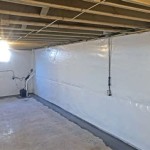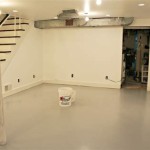Do It Yourself Basement Walls: A Comprehensive Guide
Transforming a basement into a comfortable and functional living space requires careful attention to its walls. DIY basement wall finishing is a rewarding project that can save you significant costs. Here's a comprehensive guide to assist you in successfully tackling this task:
1. Preparation:
Begin by clearing the basement of all obstacles and removing any existing wall coverings. Next, thoroughly clean the walls to remove dust, dirt, and mold. Check for any cracks, holes, or damaged areas and repair them using appropriate materials like hydraulic cement or expanding foam.
2. Choosing the Right Wall System:
Select a wall system that suits your needs and budget. Options include drywall, paneling, and cement board. Drywall is the most common choice for a smooth, finished look but requires taping and mudding. Paneling offers a quick and easy installation but may not be as durable. Cement board is moisture-resistant and fire-resistant, making it ideal for basements.
3. Installing the Wall System:
Follow the manufacturer's instructions for installing the chosen wall system. For drywall, use a drywall lift to securely place the panels and secure them with screws. Paneling typically features tongue-and-groove joints, making it easy to connect the panels. Cement board requires thinset mortar or construction adhesive for installation.
4. Finishing Touches:
Once the wall system is in place, it's time for finishing touches. For drywall, apply joint compound to the seams and nail holes. Sand the surface smooth and prime before painting or applying a finish. Paneling may require trim or molding to cover the edges. Cement board typically requires a waterproof sealant followed by a primer and paint.
5. Insulation:
Insulating basement walls is crucial for maintaining a comfortable temperature and reducing energy costs. Choose insulation materials like fiberglass batts, rigid foam boards, or spray foam. Install the insulation between the wall framing or studs to create an effective thermal barrier.
6. Vapor Barrier:
A vapor barrier is essential to prevent moisture from entering the basement walls and causing damage. Install a vapor barrier made of polyethylene plastic over the insulation. Seal all seams and penetrations with vapor barrier tape to ensure a continuous moisture barrier.
7. Fire Safety:
Consider installing fire-rated materials, such as drywall or cement board, to enhance the fire safety of your basement walls. Check local building codes for specific requirements regarding fire safety in basements. Additionally, install smoke detectors and carbon monoxide detectors for added safety measures.
Conclusion:
DIY basement walls can be a rewarding and cost-effective project. By following the steps outlined above, you can achieve a professional-looking and functional space that will add value to your home. Remember to prioritize preparation, select the appropriate wall system, and pay careful attention to insulation, vapor barrier installation, and fire safety measures. With some planning and effort, you can transform your basement into a comfortable and inviting living space.

Bowing Wall Repair Options Do It Yourself Basement Solutions

Stable Brace System Forever Foundation Repair

Reviews Of Gorilla Wall Braces Do It Yourself Basement Solutions

Steps For Finishing Your Basement Budget Dumpster

Gorilla Wall Braces By Resch Enterprises Inc Family Owned Since 1967

Perpendicular Gorilla Brace Do It Yourself Basement Solutions

Insulating And Framing A Basement

10 Affordable Unfinished Basement Ideas Building Bluebird

Parallel Gorilla Brace Do It Yourself Basement Solutions

Diy Basement Waterproofing By Triad








